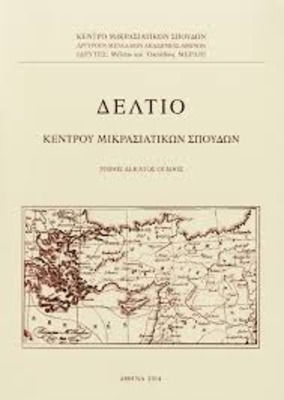Ἐνυπόγραφη μεταβυζαντινὴ εἰκόνα (1765) μὲ τὴν παράσταση τῆς Ἄκρας Ταπείνωσης ἀπὸ τὴν Κερμίρα τῆς Καππαδοκίας
Part of : Δελτίο Κέντρου Μικρασιατικών Σπουδών ; Vol.19, 2015, pages 55-64
Issue:
Pages:
55-64
Parallel Title:
Signed Post-Byzantine icon (1765) depicting Christ as ‘Man of Sorrows’ from Kermira in Cappadocia
Section Title:
Articles
Author:
Abstract:
In this work Christ is depicted in the iconographic type known as the“Man of Sorrows”. The icon comes from the refugees’ heirlooms of AsiaMinor, possibly from Kermira of Cappadocia. It is in almost perfect conditionand measures 39,7×39,4 cm. The center of the depiction is occupiedby the deceased Christ, while two lamenting angels, in smallerscale, stand behind. The lifeless Lord is inside the sarcophagus with hishands crossed. Between the two angels appears the nominative inscriptionof the icon, while on the right side of the sarcophagus the painter’ssignature.The earliest known representation of this iconographic type is foundin manuscripts and icons of the 11th and 12th centuries. Stylistically, thework is a combination of Byzantine and Western art. In the present iconthere is an emphasis on the anatomy of the chest, a contrast between thestrong body and the weak arms. The icon has an almost exaggeratedexpressiveness due to the white brushstrokes on the brownish-grey underpaintwhich create a dramatic lighting effect.Although the painter’s signature permits us to understand his name,it is not possible to identify him. The nominative inscription reveals thename of the donor, his origin and the date when the icon was produced.
Subject:
Subject (LC):




